
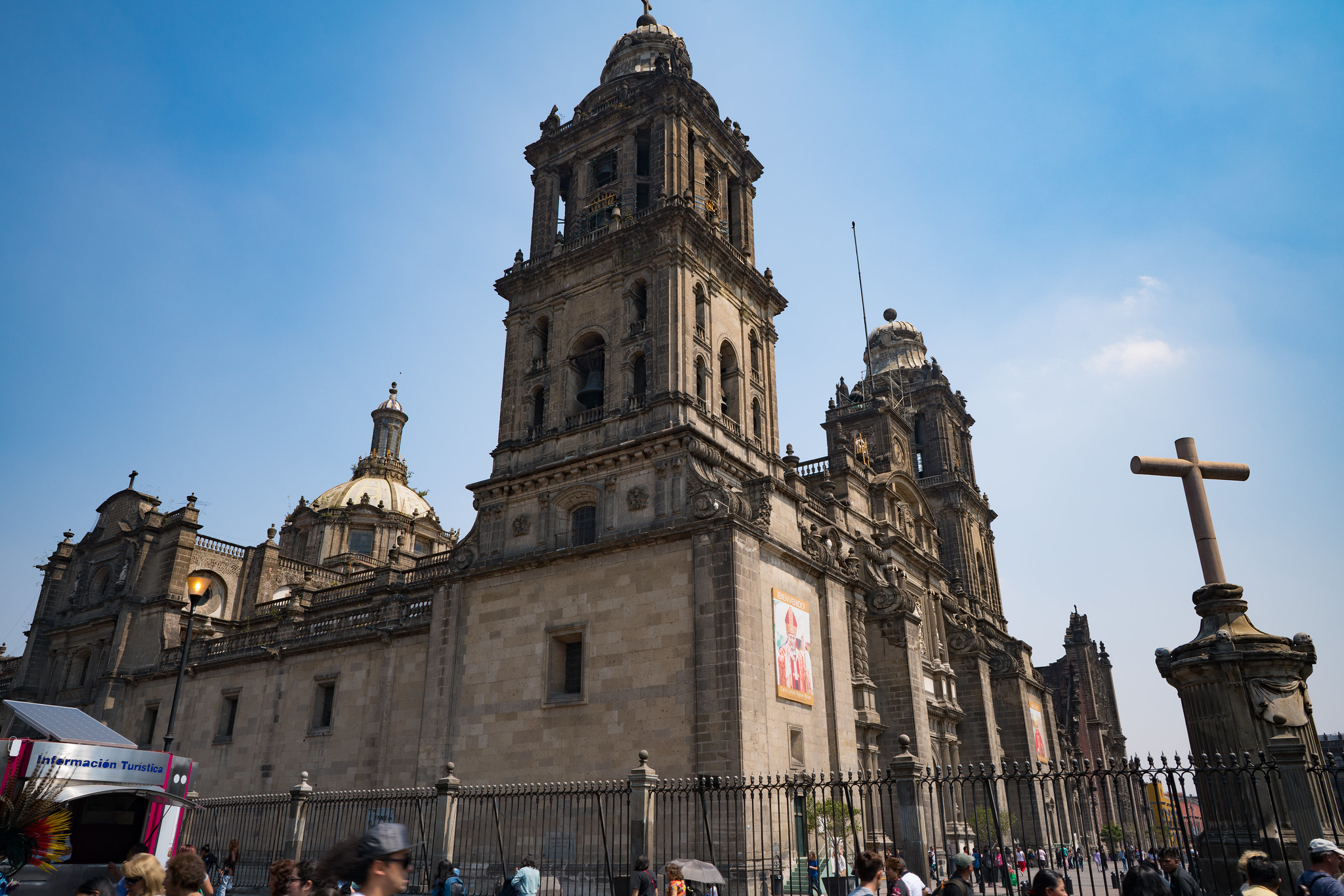
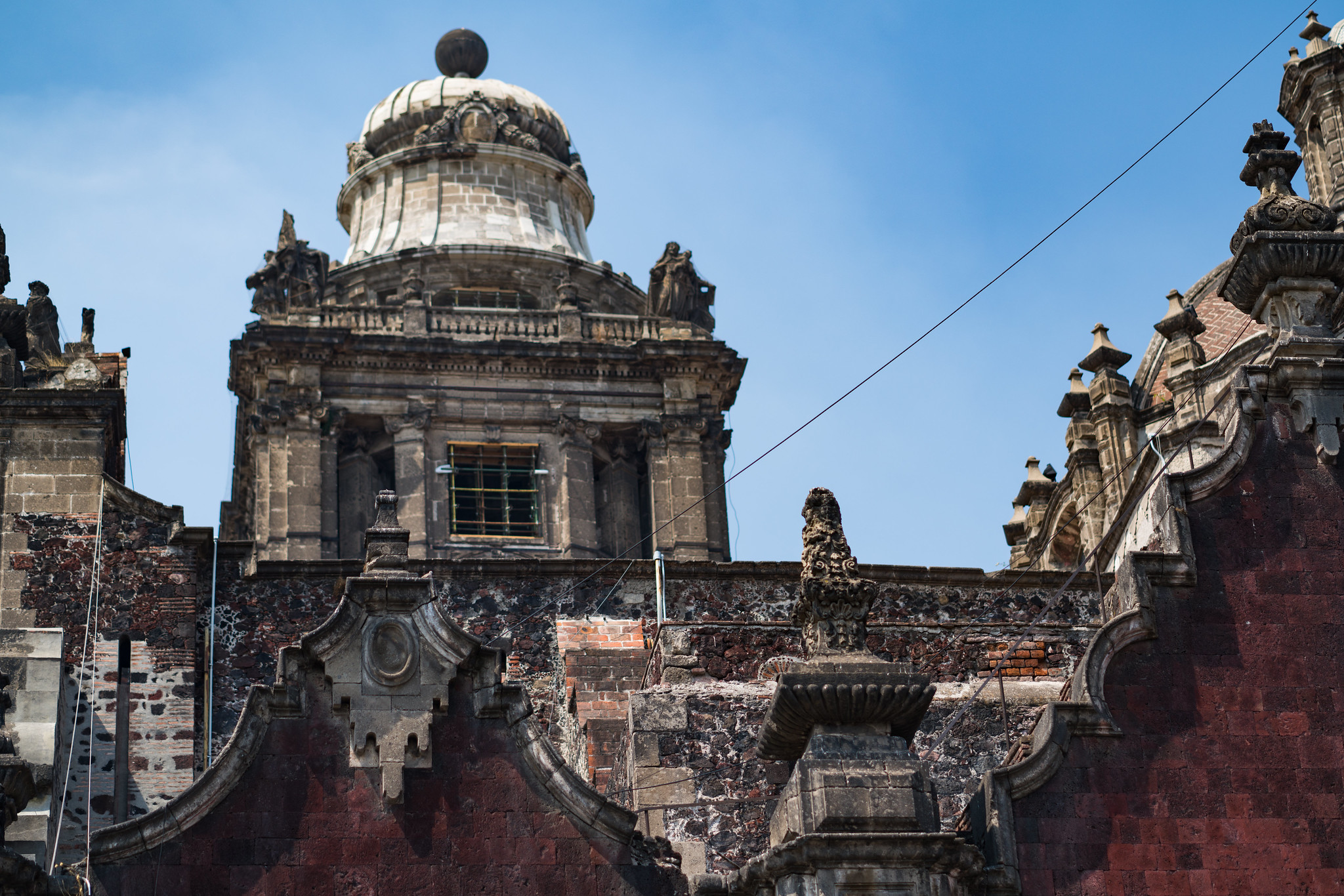
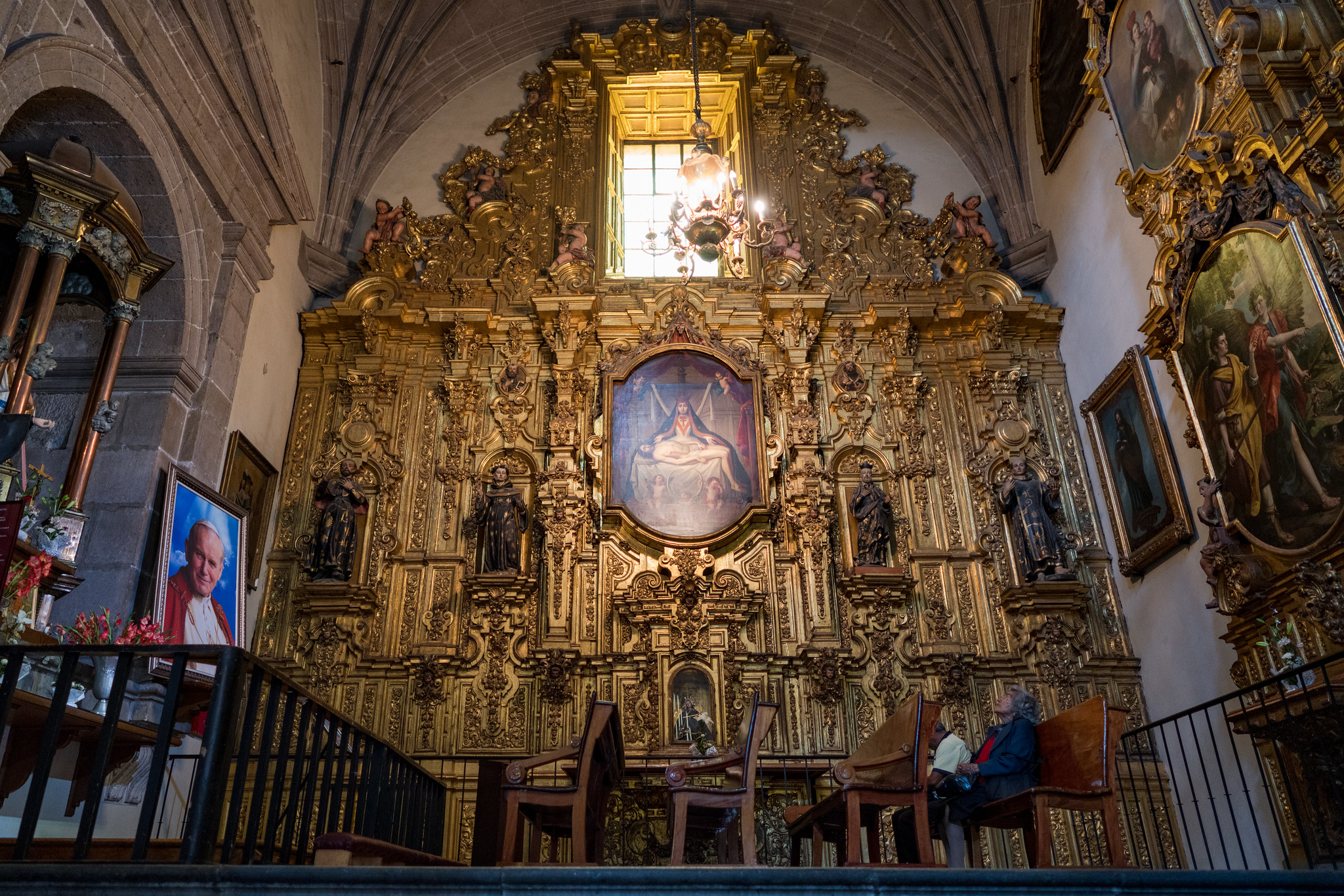
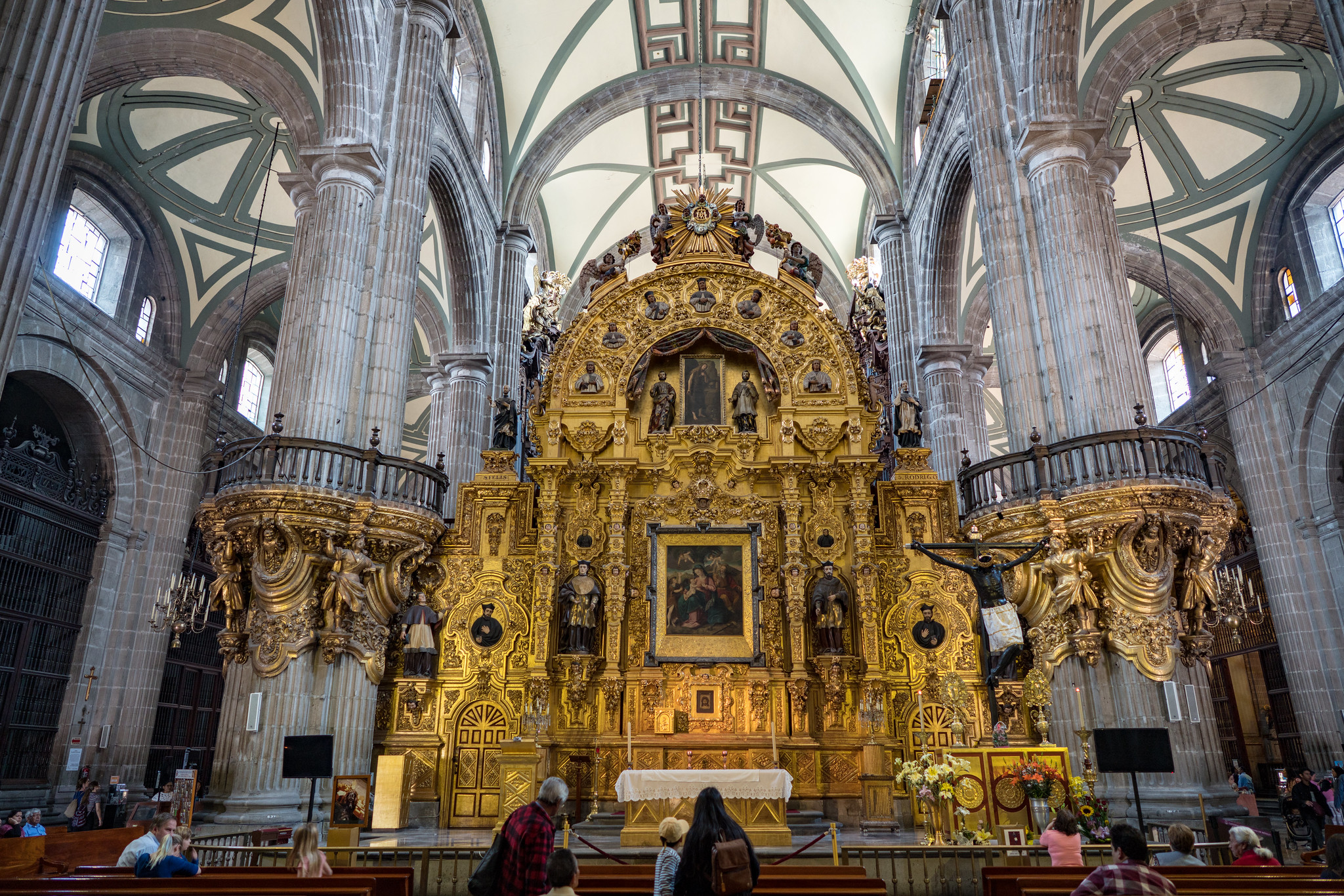
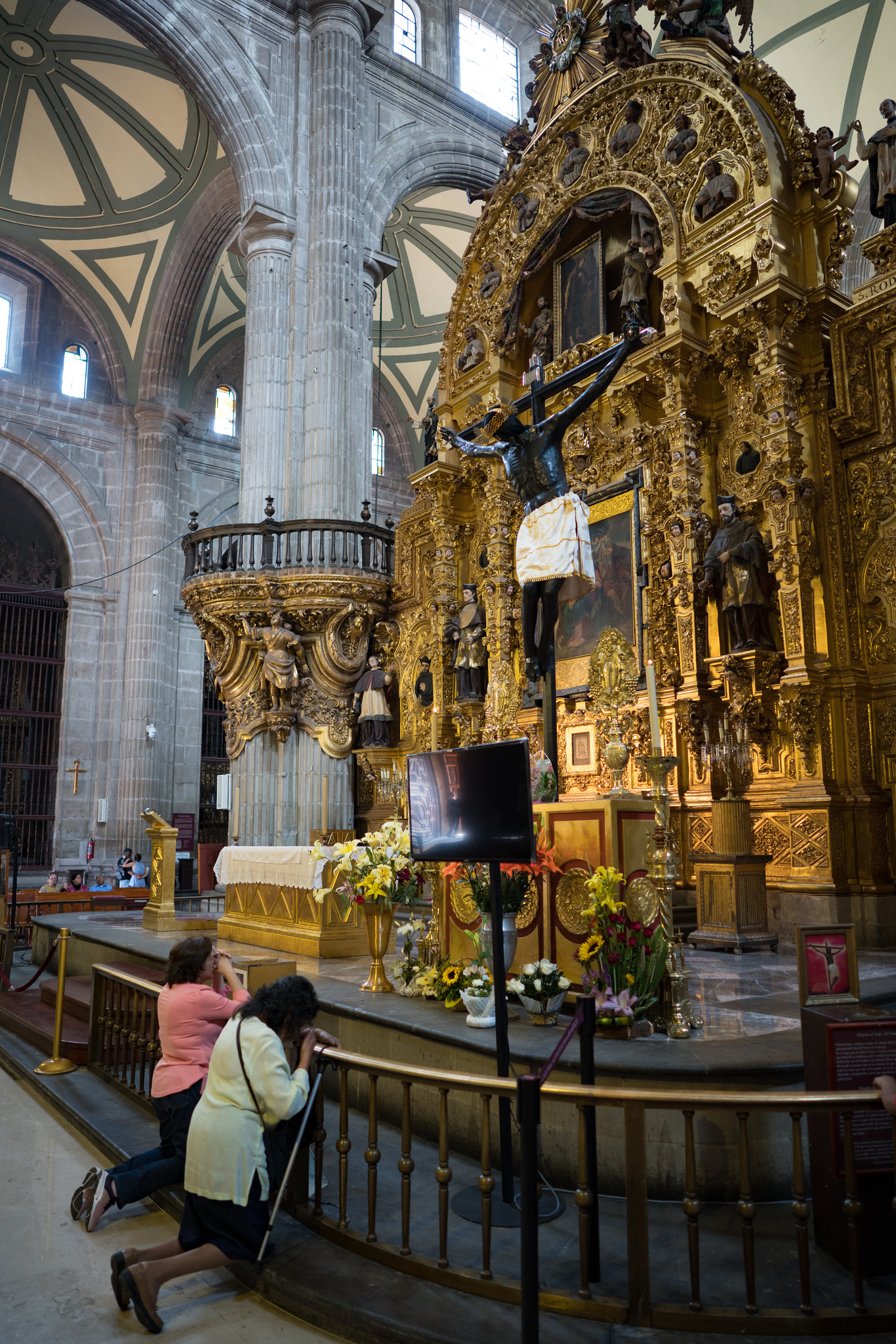
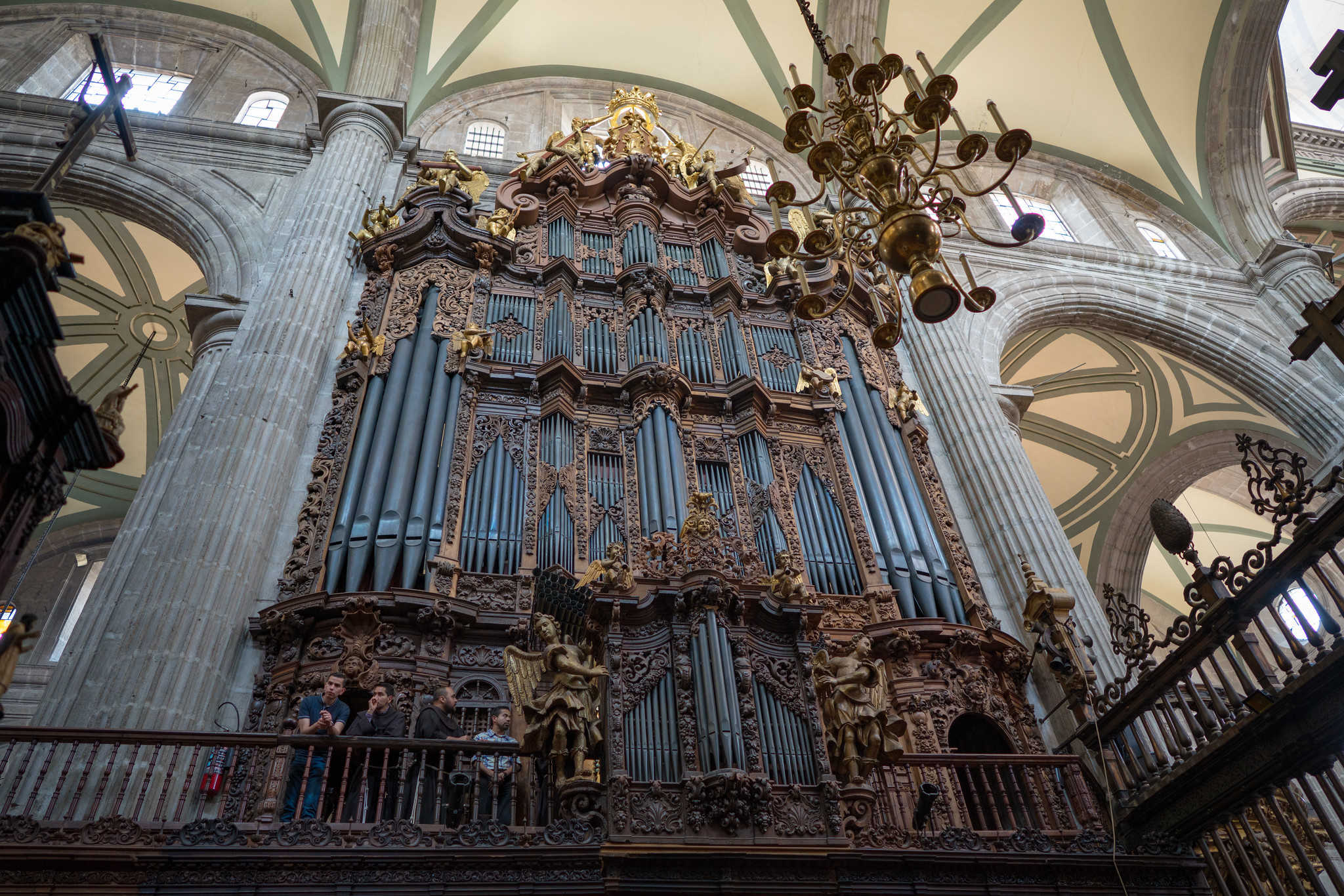
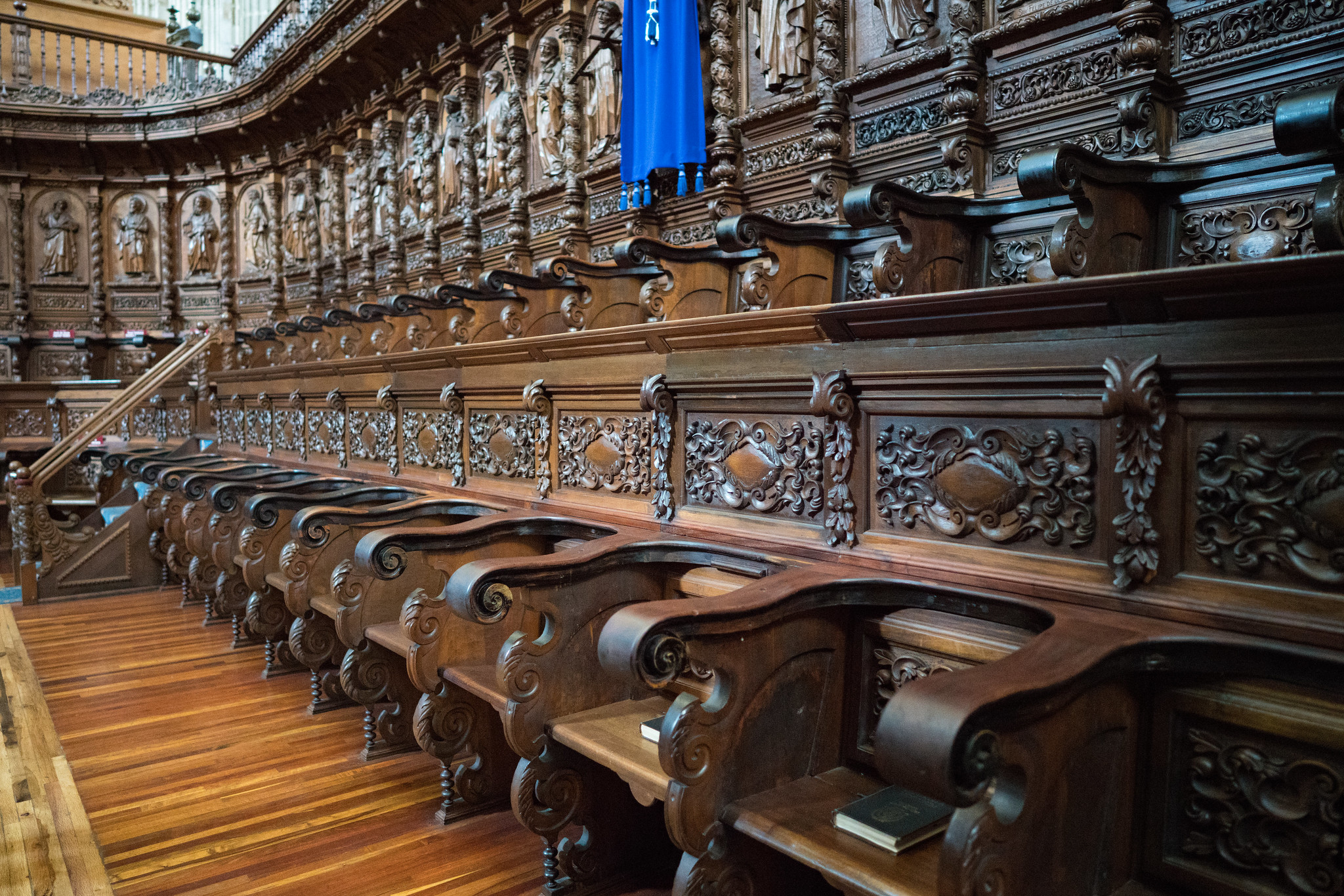
Photos: Nan Palmero, CC BY 2.0 DEED
Mexico City’s Metropolitan Cathedral is built on land of a mystical origin. It was the crossroads of the four cardinal points, and the demarcation of the meeting points of the four original neighborhoods of ancient Tenochtitlan. It’s thus the spiritual center of the Aztec capital.
The Metropolitan Cathedral is widely considered to be the highest point of Vice Regal and colonial art, architecture, and craftsmanship.
Guided tours are widely available as are trips up the bell towers and more.
Metropolitan Cathedral and Tabernacle Construction on the building began in the mid-16th century and was completed in 1813. The best architects and artists of New Spain took part, from Claudio de Arciniega to Manuel Tolsá, from Simón de Pereyns to Nicolás Rodríguez Xuárez. On the main façade are the architectural styles developed during the Viceroyalty: Renaissance, Baroque, and Neoclassical. In the center of the three portals making up the façade, three large reliefs carved in marble survive. The relief in the center represents the Assumption of Mary, to which the temple is dedicated. On the side doors are "St. Peter receiving the keys from the hands of Christ" and "The nave of the Church". The bell towers stand out, topped by stone belfries, and the neoclassical dome. The interior consists of five naves and the transept. In the central nave is the Altar of Forgiveness, the Cathedral Choir, the two organs and the Main Chapel or Chapel of the Kings. This includes the magnificent Altarpiece of the Kings, the work of Jerónimo de Balbás. In the ambulatory naves there are several works of art and furniture of the old temple. In the naves housing the chapels there are seven spaces on each side, and next to the main altar are the Chapter House and the main Sacristy. Of the fourteen lateral chapels, the one dedicated to the Relics, one is consecrated to San Felipe de Jesús (first Mexican saint), and the chapel of the Angels conserves a beautiful set of works of art. The chapel of San Pedro holds valuable works of art and the chapel of Nuestra Señora de las Angustias de Granada also holds significant altarpieces. In the main sacristy hangs a collection of paintings and sculptures, sumptuary works ,and objects of utilitarian art. The paintings are the work of two magnificent artists: Cristóbal de Villalpando and Juan Correa. Both flourished at the end of the 17th century. The images of greater devotion of the temple are: El Cristo del Veneno, El Cristo de la Salud, El Señor del Cacao and El Santo Niño Cautivo. On the side facing east, the Metropolitan Tabernacle and the Seminary School and a School for Infants were built. Today only the Sagrario remains standing. It was designed and built under the direction of Lorenzo Rodriguez in the middle of the 18th century. Its two facades masterfully combine the quarry of Chiluca with the tezontle in pilasters and niches with apostles.
Heart of Mexico Walking Tours: Ruta Zócalo–Templo Mayor
< < Plaza de la Constitución | Palacio Nacional > >
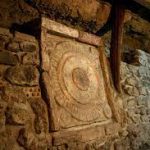 When the city of Tenochtitlan fell to Spanish rule, more than 50 buildings were destroyed in the sacred central quarter. A first Cathedral was demolished almost immediately, but soon a more ambitious project was underway for the most important church in the vice royal capital. Archaeological excavations uncovered part of the Temple of the Sun and the stairway of another building beneath the current Cathedral. The remains of the primitive church were excavated within the current atrium, and today these can be admired through archaeological windows.
When the city of Tenochtitlan fell to Spanish rule, more than 50 buildings were destroyed in the sacred central quarter. A first Cathedral was demolished almost immediately, but soon a more ambitious project was underway for the most important church in the vice royal capital. Archaeological excavations uncovered part of the Temple of the Sun and the stairway of another building beneath the current Cathedral. The remains of the primitive church were excavated within the current atrium, and today these can be admired through archaeological windows.
Heart of México Walking Route: The Ancient Route
Proyecto “Corredor de Cultura Digital”.
Nombre de la investigación: Investigación Centro Histórico, Monumentos, Edificios y Puntos de Interés (2023)
Dirección de investigación y diseño de Rutas: Acércate al Centro A.C. Guadalupe Gómez Collada
Coordinación e investigación histórica: Fideicomiso del Centro histórico Dir. Maestra Loredana Montes
 +52 (55) 5510 0440
+52 (55) 5510 0440
 http://www.catedralmetropolitanademexico.mx/
http://www.catedralmetropolitanademexico.mx/
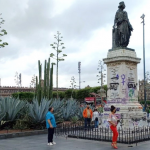
Nearest at 0.07 kms.
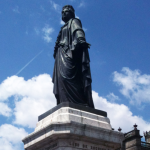
Nearest at 0.09 kms.
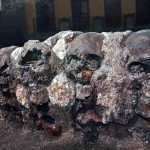
Nearest at 0.10 kms.
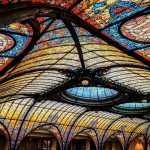
A landmark hotel on the edge of Mexico City's main plaza . . .

One of the most important sites in the city, even today, don't miss the chance to visit the Templo Mayor.
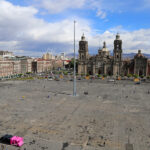
There's no center like the very center, and in Mexico City, that means el Zócalo!
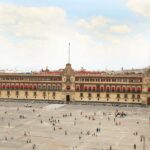
One of Mexico City's proudest, most enormous parts of history, the Palacio dominates the entire east of the Zocalo.
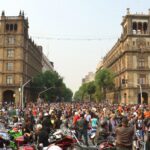
Among the earliest on the buildings on the Zócalo, it's still the seat of City government.